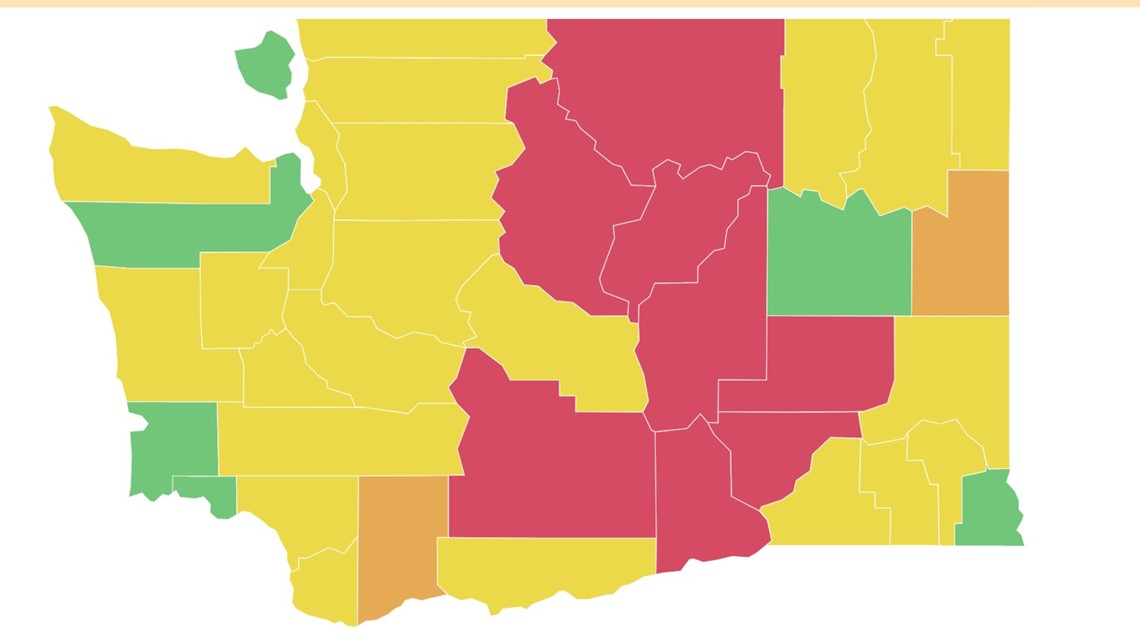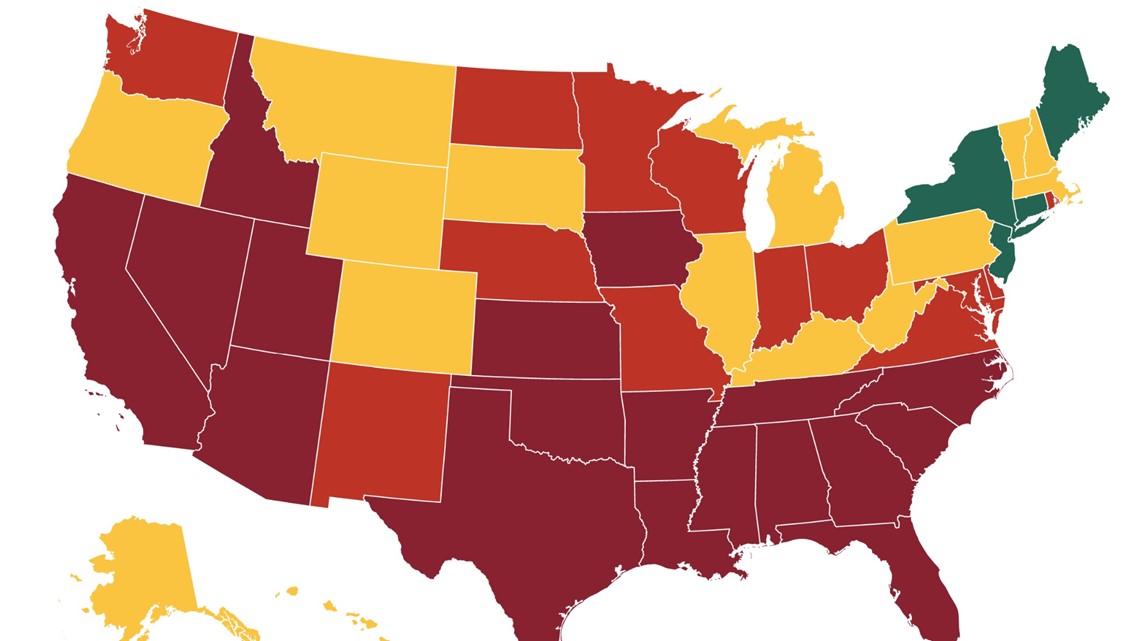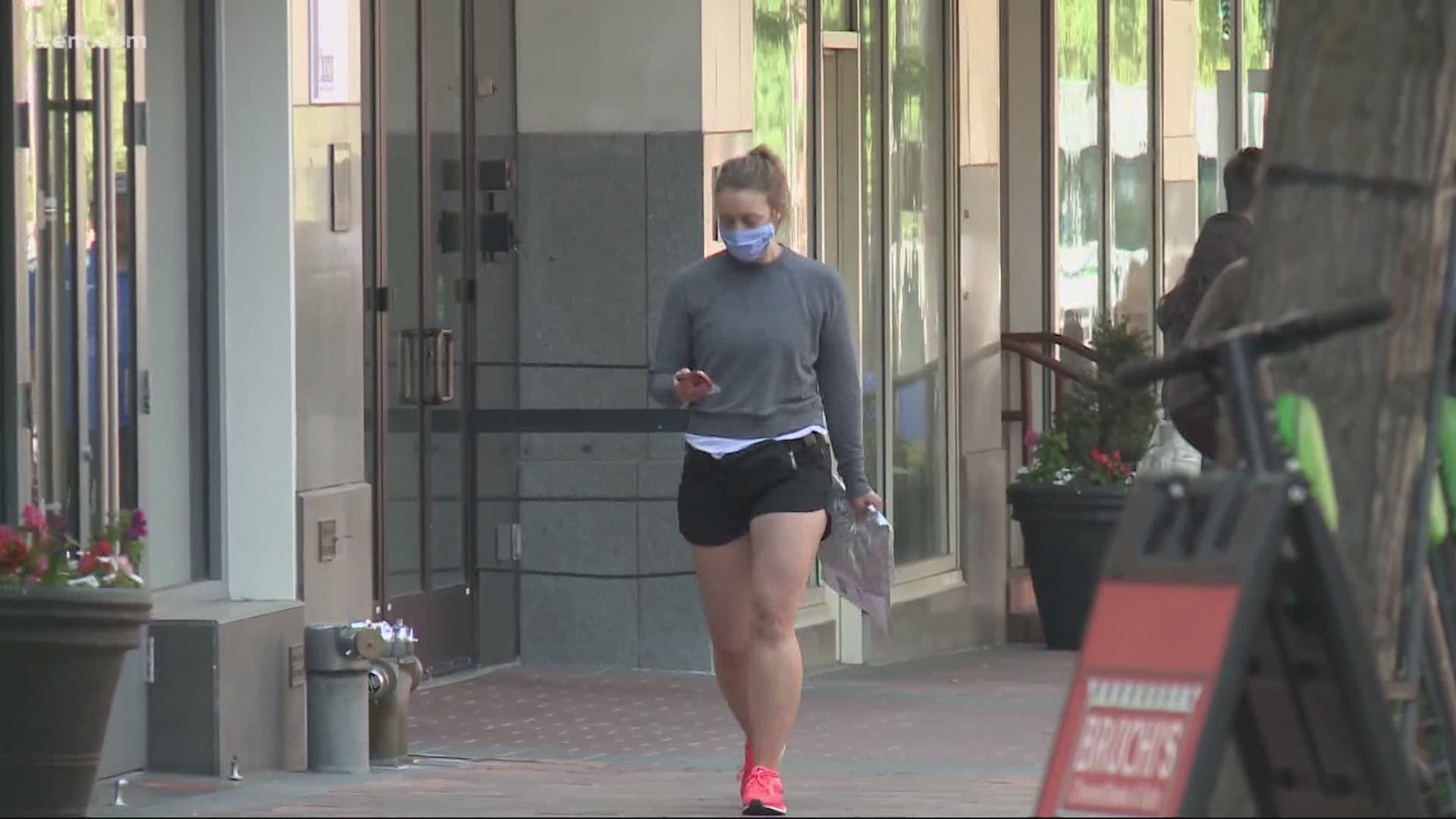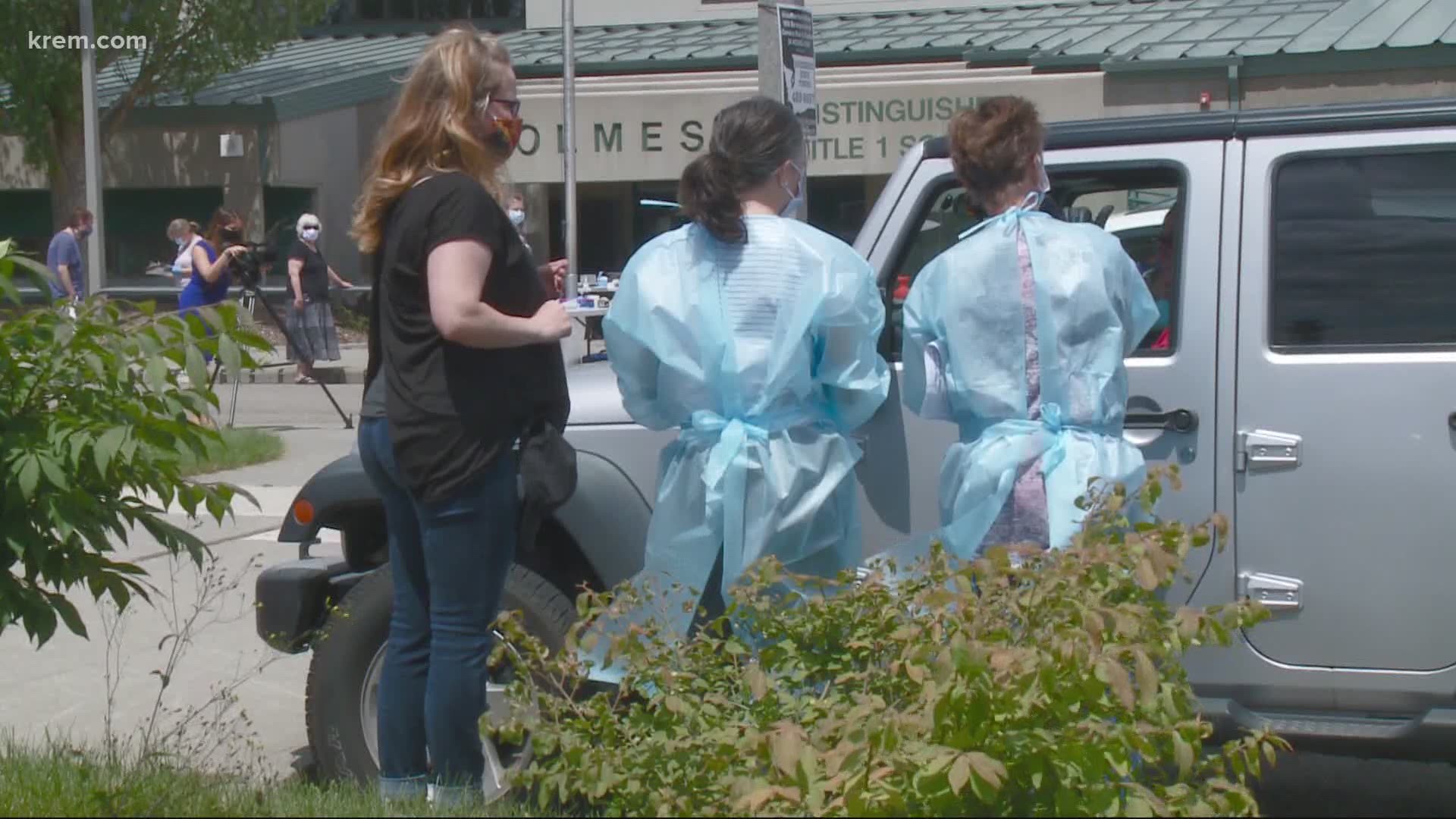SPOKANE, Wash. — It's a question that's likely on the minds of many Spokane County and North Idaho residents right now: What is the risk of COVID-19 infection in my community?
Several maps from researchers across the country are illustrating risk levels for states and counties nationwide.
Researchers at Harvard University have joined forces to create a risk level map and guidance for policy makers and the public.
The risk levels outlined by experts are based on the amount of daily new coronavirus cases per 100,000 people. A county or state that has one daily new cases per 100,000 is green; one to nine is yellow; 10 to 24 is orange; and 25 or more cases is red.
Spokane County is sitting in the orange level, with an average of 12.8 new cases per day per 100,000 people on average. Washington state as a whole is in the yellow zone, according to the map, which means rigorous testing and contact tracing programs are advised to control community spread of the virus.
Orange indicates "accelerated" community spread, according to researchers. This means "strategic choices must be made" about which non-pharmaceutical interventions the area should use to control the virus.


For communities in the orange zone, stay-at-home orders are advised unless testing and contract tracing capacity meet certain standards. All areas in the yellow and orange zones, though, will want to use some combination of social distancing strategies and infection control.
There is a shortage of testing supplies statewide and at the local level, Spokane County Health Officer Dr. Bob Lutz said on Monday. Results for some people in the county are coming back as long as 10 days after they were tested, he added.
“That’s unacceptable, but it’s also to be expected," Lutz said, adding that large labs are receiving a multitude of samples from across Washington state and other states throughout the nation.
Lutz emphasized that it is essential for people who are tested for coronavirus to presume they have a positive case until proven otherwise and self-isolate.
Spokane County is currently in Phase 2 of Washington state's reopening plan. Businesses such as salons and restaurants can operate at 50% capacity, and small group gatherings of five people or less are allowed.
Kootenai County, Idaho, which is home to Post Falls, Coeur d'Alene and other cities, is also sitting in the orange zone, according to the map.
The county is in Stage 4 of Idaho's reopening plan, which allows gatherings of more than 50 people and normal operations for most businesses. Large venues, such as those used for sports, still need to operate at a limited capacity.
Right now, there are nearly 22 cases per 100,000 people reported daily in the Kootenai County, data from Harvard researchers shows. Idaho as a whole is also in the orange, with 22 new cases reported per 100,000 people every day.
Panhandle Health District reported on Monday that 97 people in Idaho's five northern counties tested positive for coronavirus. This is the second time health officials have reported this record amount of COVID-19 cases in the area.
On Tuesday, PHD reported 47 new coronavirus cases in North Idaho.
COVID-19 risk at events
A new tool developed by Georgia Tech allows people to look up their risk of encountering COVID-19 at event, based on the county they live in.
The interactive map allows users to choose a county anywhere in the United States, choose the event size (anywhere from 10 people to 10,000), and then calculate the risk that at least one COVID-19 positive person will be present.
In Spokane County, the tool calculates an 82% chance that someone in attendance will be COVID-19 positive at a 100-person event. At a gathering with only 10 people, that risk drops to 16 percent.
Alternatively, the risk is 94% or above at gatherings with 100 people in the five Washington counties still in a modified Phase 1 of reopening: Benton, Chelan, Douglas, Franklin, and Yakima.
In Kootenai County, Idaho, the risk is 26% for gatherings or 10 people compared to 95% for gatherings of 100.
The interactive map is based on data from The COVID Tracking Project at The Atlantic, which pulls daily data on COVID-19 testing and patients from all 50 states. It's also based on 2019 U.S. Census data.
The risk assessment tool was developed by researchers at Georgia Tech's Institute of Technology, Biological Sciences (GT-BIOS) and the Applied Bioinformatics Laboratory (ABiL).
Another map shows Washington 'trending poorly,' while Idaho sees 'uncontrolled spread'
Another online resource is tracking data from the Centers for Disease Control and a licensed group called the COVID Tracking Project. States in red are trending poorly and states in the "bruised" red color are seeing "uncontrolled spread" of coronavirus.
On this map, Idaho falls in the "bruised" category while Washington is in red. The data shows that Washington is seeing a 14-day trend of new coronavirus cases increasing a 41% percent, while this numbers sits at 112% in Idaho.


For both states, though, the ICU occupancy is considered "normal" right now.
Masks are required for all residents of Washington state, but they are not required statewide in Idaho. Some cities, including Moscow, have ordered that all residents wear face coverings.
TEGNA staff members contributed to this report.


